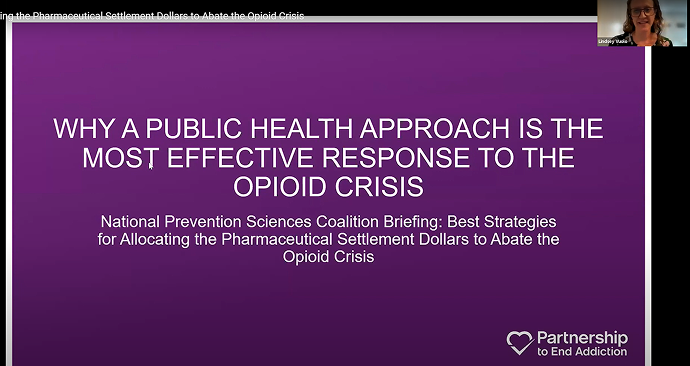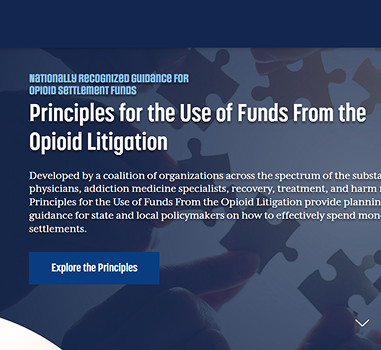Promoting Effective Use of Opioid Settlement Funds
Challenge
State and local governments will receive approximately $50 billion over the next several years as a result of lawsuits they brought against opioid manufacturers, distributors, and other companies for their role in contributing to the opioid crisis. The opioid settlement funds provide an unprecedented opportunity to direct needed resources to address the opioid crisis and prevent future drug epidemics IF the funds are spent on effective strategies to prevent and treat addiction and support individuals in recovery.
History offers a dire warning. Less than 3% of the funds states received in the tobacco settlement have been spent on tobacco use prevention and cessation. We cannot afford to make the same mistake with the opioid settlement funds.
Many of those making decisions about how to invest the opioid settlement funds lack expertise on addiction and may be inclined to spend them on existing approaches that are not effective.
What we did
We have used our research on effective, public health-based approaches to addressing substance use and addiction to provide recommendations for decision-makers on how to wisely invest the opioid settlement funds.
We worked with other experts to create a comprehensive research report designed to support and empower state and local officials in making opioid settlement fund allocation decisions – Evidence-Based Strategies for Abatement of Harms from the Opioid Epidemic. It consolidates research on effective strategies and provides recommendations for high-impact investments of the funds.
We also partnered with the Johns Hopkins Bloomberg School of Public Health to create the Principles for the Use of Funds from the Opioid Litigation, which are a highly utilized resource among those making opioid settlement fund decisions. We helped develop indicators for state and local governments to assess their readiness to receive opioid settlement funds and adhere to the Principles (specifically, Principle 3: Investing in Youth Prevention). We also serve on an advisory committee that recognizes states and localities demonstrating adherence to the Principles.
We have been specifically focused on developing recommendations to invest the funds in effective prevention. We presented at Congressional and National Prevention Science Coalition briefings, published commentaries in Health Affairs Forefront and STAT (and related podcast), and hosted a roundtable at the Society for Prevention Research Conference.
We also served as a peer reviewer for model state law for opioid litigation proceeds developed by the Legislative Analysis and Public Policy Association and supported by the federal Office of National Drug Control Policy.
Outcome
States and localities are only just starting to plan for and spend their opioid settlement funds.
The Evidence-Based Strategies report and the Principles have become frequently cited resources. As we share these resources and present to more audiences, we hope more decisionmakers starting to consider allocations turn to this information. Some states and localities are already spending funds on recommended strategies, including evidence-based prevention. Partnership has worked with local organizations in several states/localities to use opioid settlement funds for prevention.

